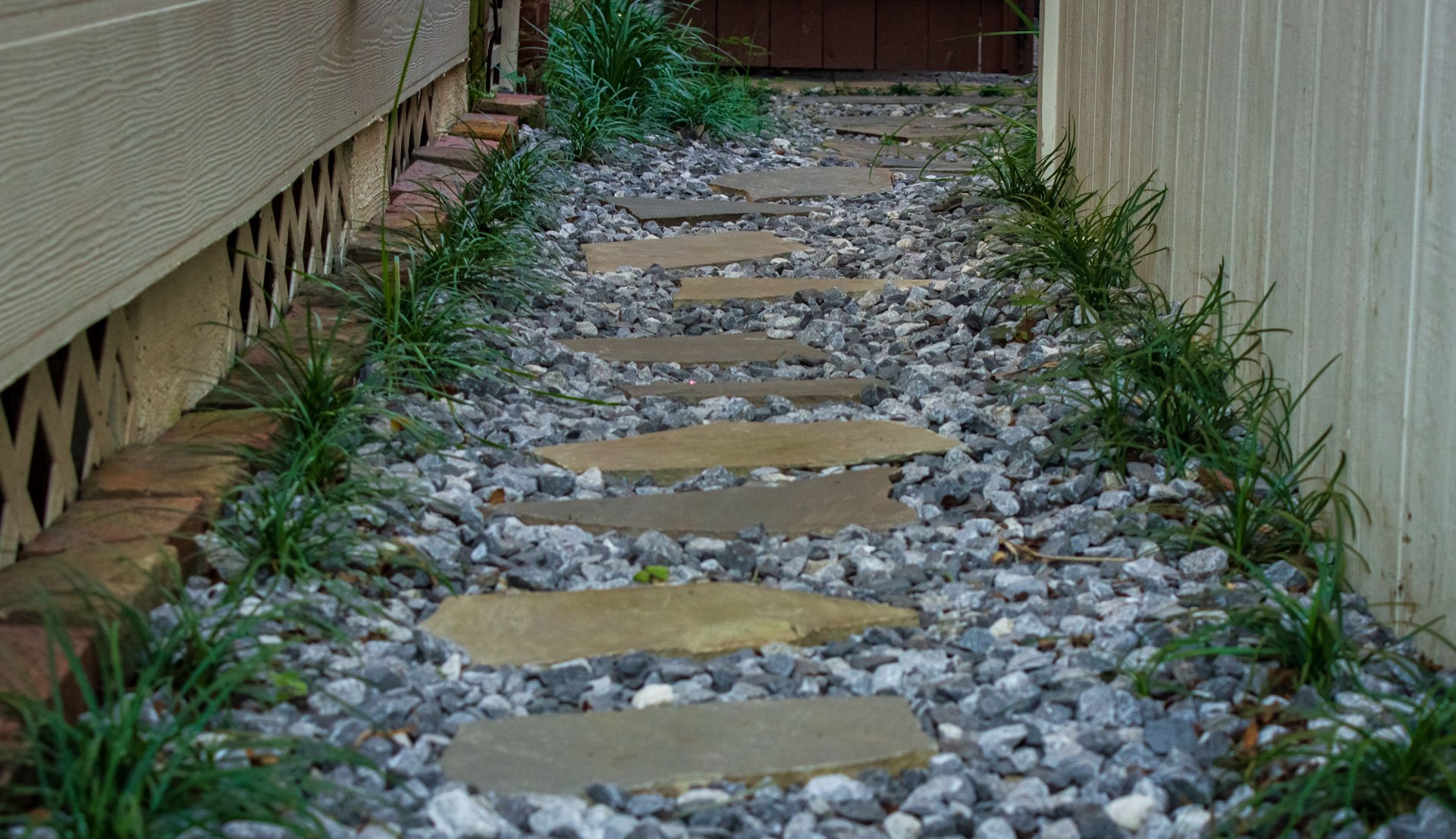
Water Management
Stormwater management reduces the time it takes for water to drain into the ground by creating intentional spaces to naturally deal with water. Stormwater management helps people and the planet by preventing flooding and subsidence by directing localized flooding and storing water in the ground.
Storm Water Retention Methods
-

Concrete Removal
Paved yards do not allow rainwater to soak into soil. Instead, the water runs off into the street and storm sewer systems, which then leads to more street flooding and sewer backups, increased pressure on infrastructure, more runoff pollutants entering waterways, and increased subsidence. Increase your green space by removing concrete from your yard.
-

Native Plants & Trees
Native plants and trees are well-adapted for their environment because they have been growing in this region for thousands of years. Their extensive root systems allow them to absorb a great amount of stormwater. They provide food and shelter for local wildlife and pollinators as well as aesthetic beauty for your outdoor space.
-

Permeable Paver Patio
Permeable pavements infiltrate, treat, and store rainwater where it falls. They can be made of pervious concrete, porous asphalt, or permeable interlocking pavers. This practice is particularly cost effective in areas of high precipitation and high land values.
-

Rain Garden
Rain gardens, also known as bioretention or bioinfiltration cells, are shallow, vegetated basins that collect and absorb runoff from rooftops, sidewalks, and streets.
-

Rain Barrel
Rain barrels are harvesting systems that collect and store rainfall for later use. When designed appropriately, they slow runoff and provide a sustainable source of water.
-

Bioswale
Bioswales are vegetated, mulched, or landscaped channels that provide treatment and retention of stormwater from one place to another. As linear features, they are particularly well suited to being placed along streets and parking lots.
-

Storm Water Planter Box
Planter boxes are urban rain gardens with vertical walls and either open or closed bottoms. They collect and absorb runoff from sidewalks, parking lots, and streets and are ideal for space-limited sites in dense urban areas.
Flow-through planter boxes are structural landscaped reservoirs that collect stormwater, filter out pollutants, and disperse water through the vegetation, growing mediums, and gravel.
Why Green Infrastructure?
Many communities in the Gulf South are plagued by chronic flooding and climate change is exacerbating this issue. Green infrastructure is a tool to improve stormwater management and reduce the risk of localized flooding.



